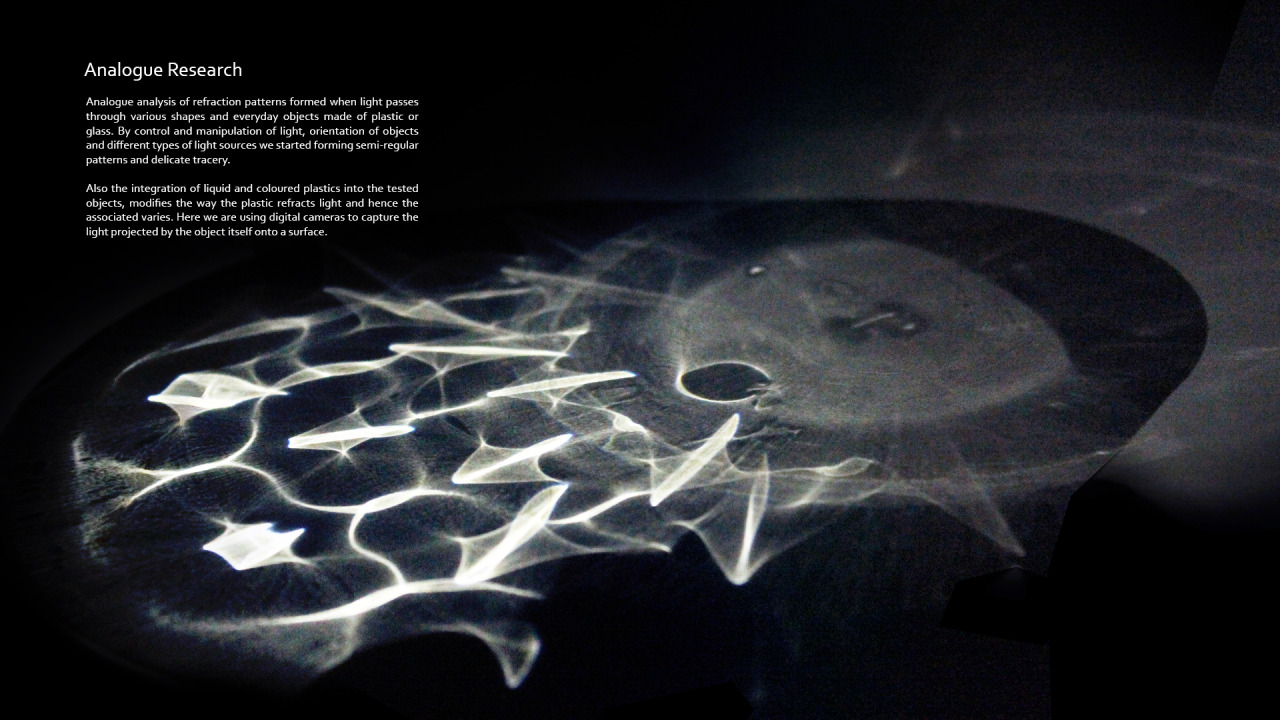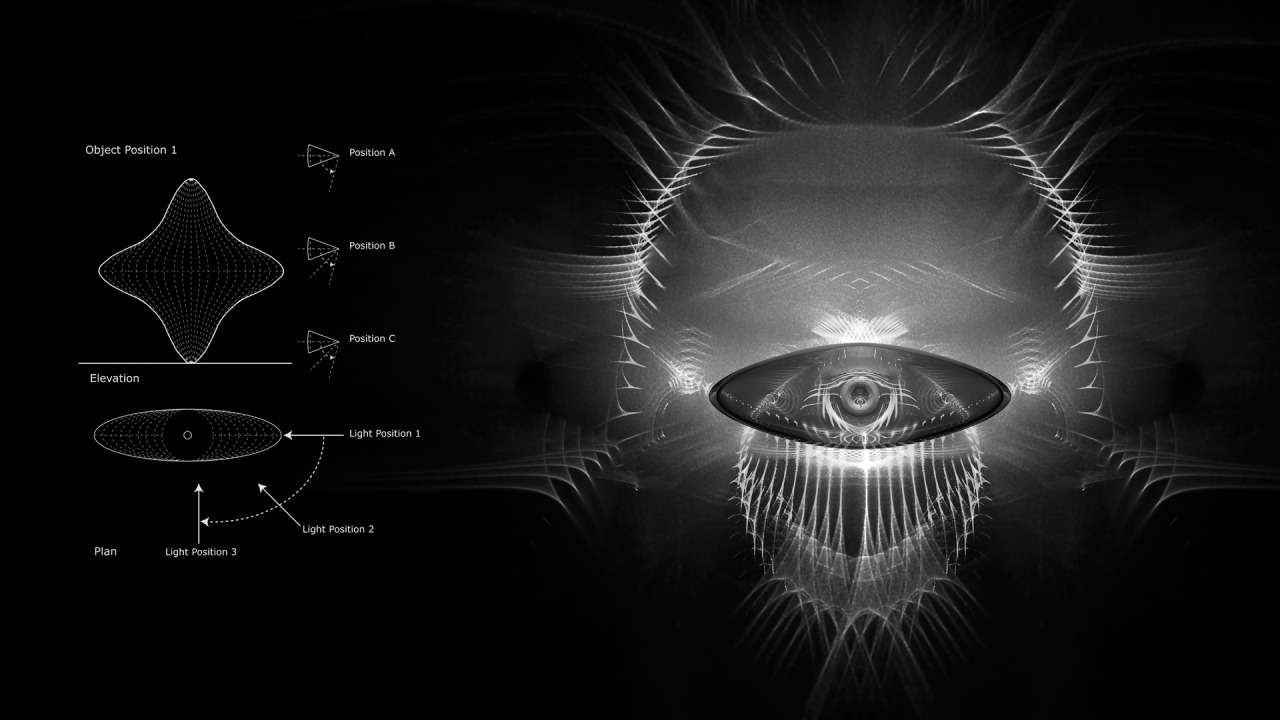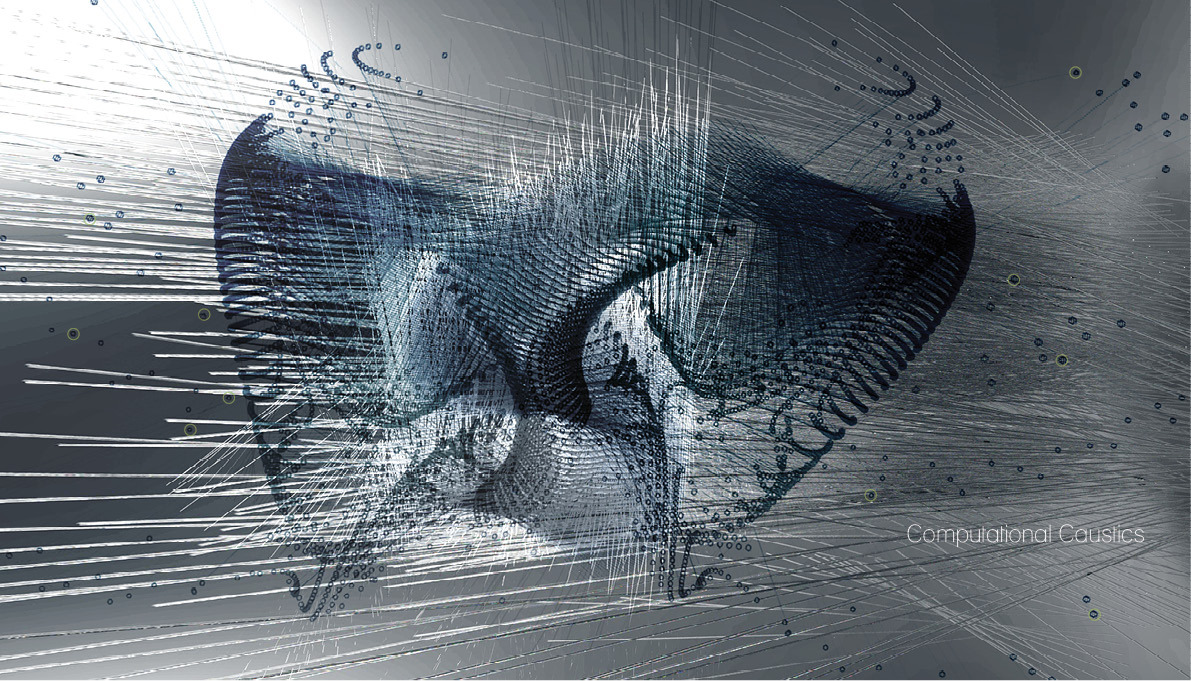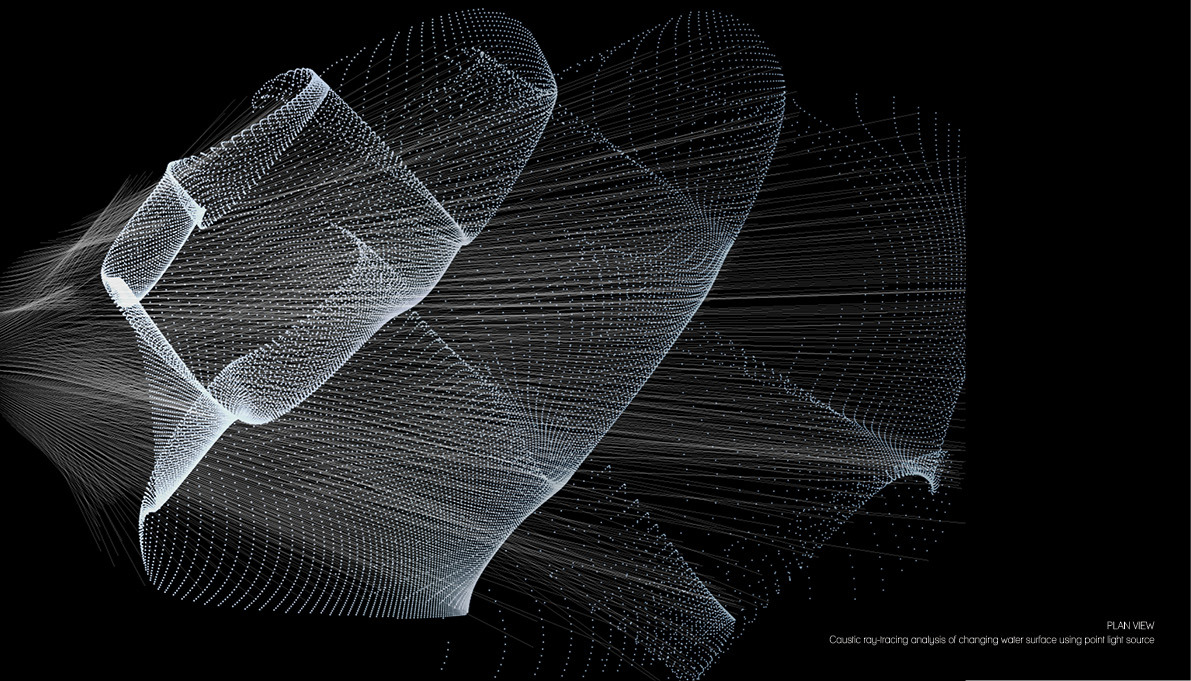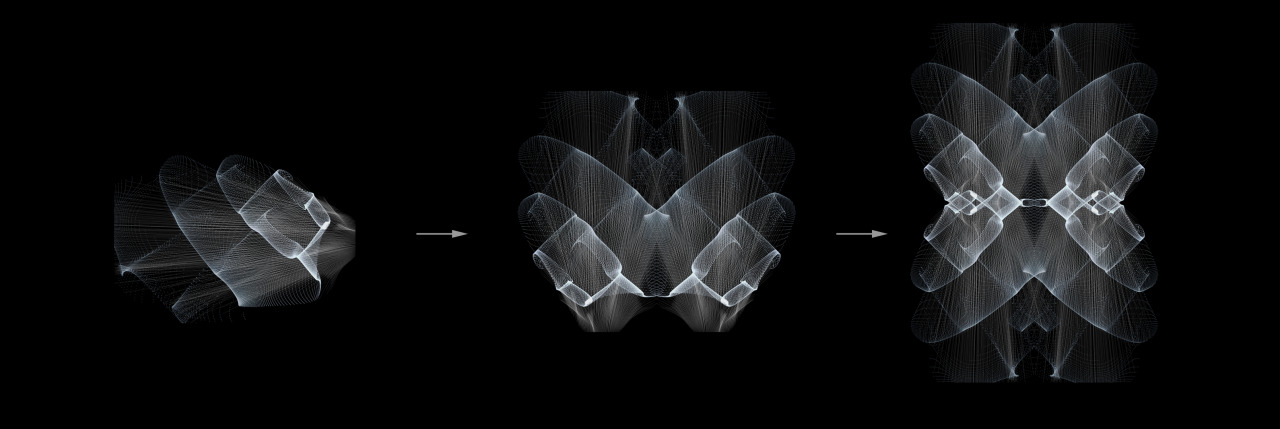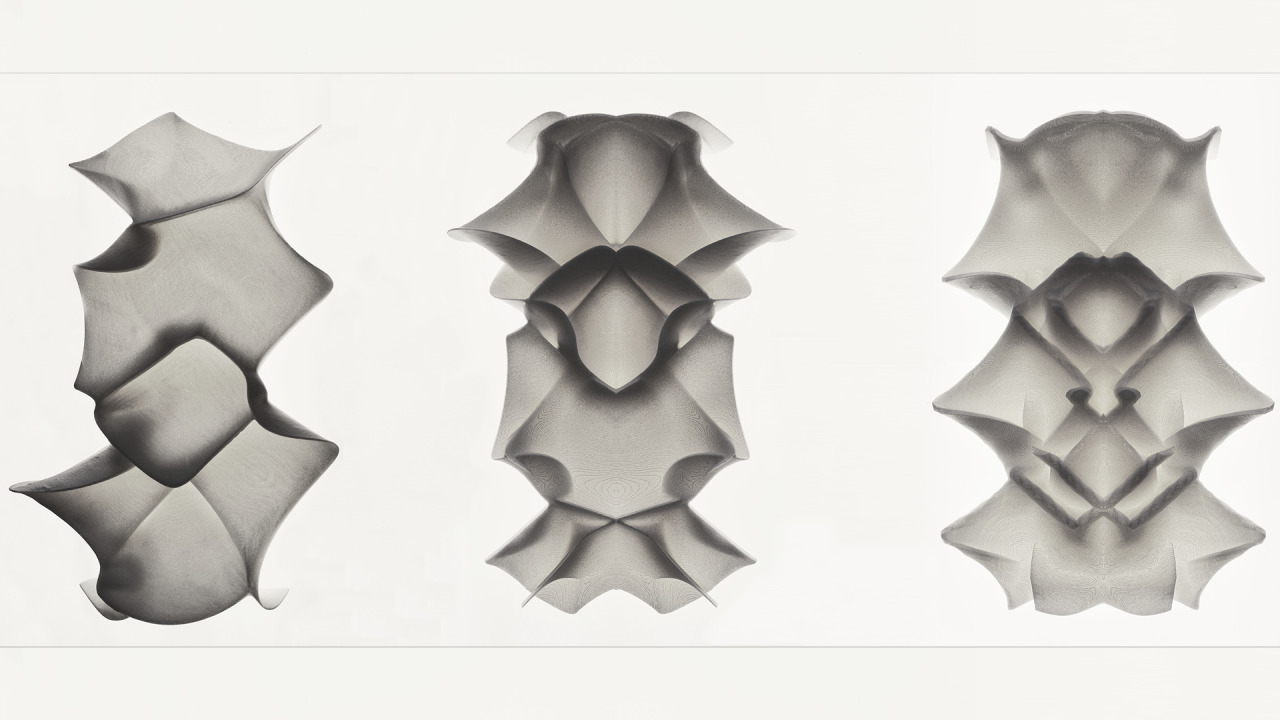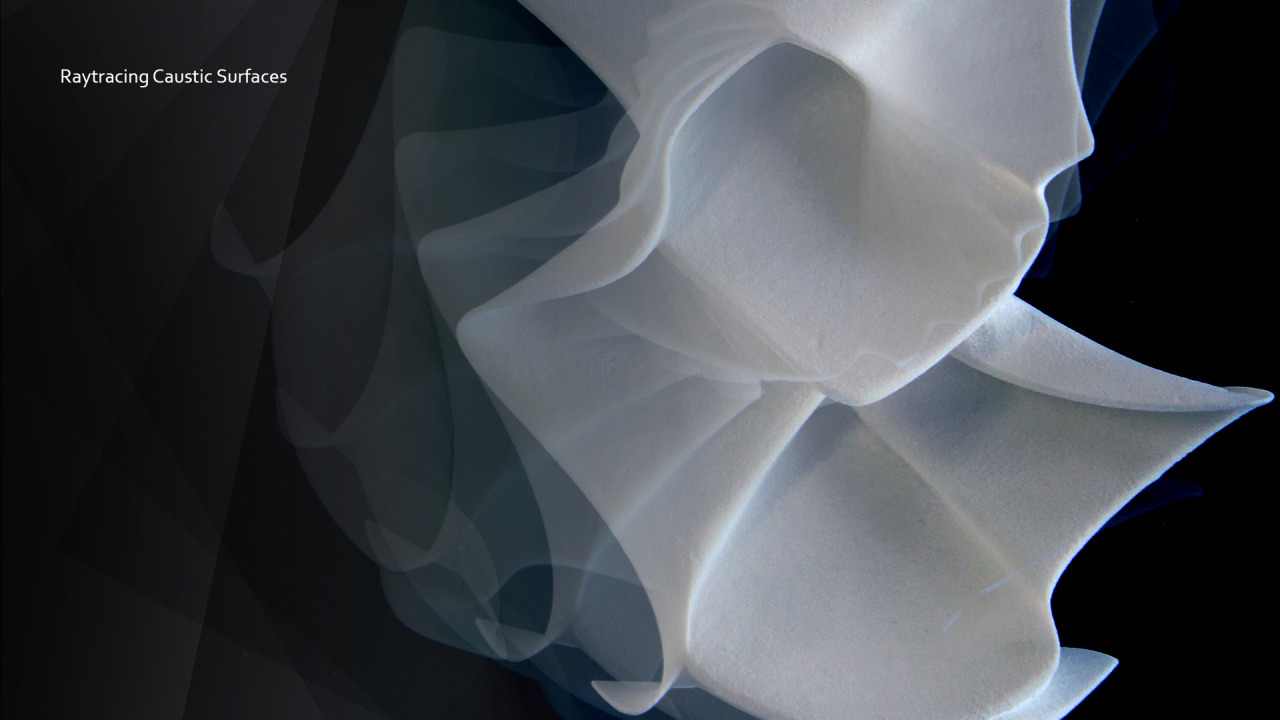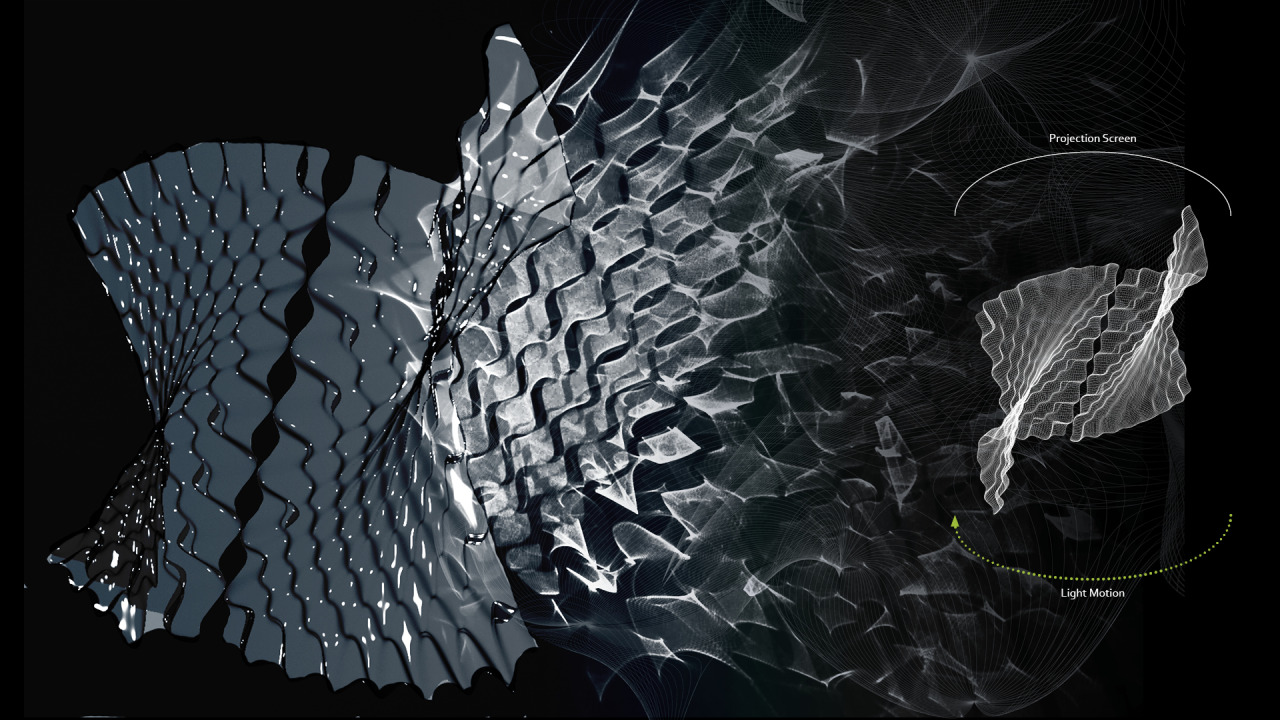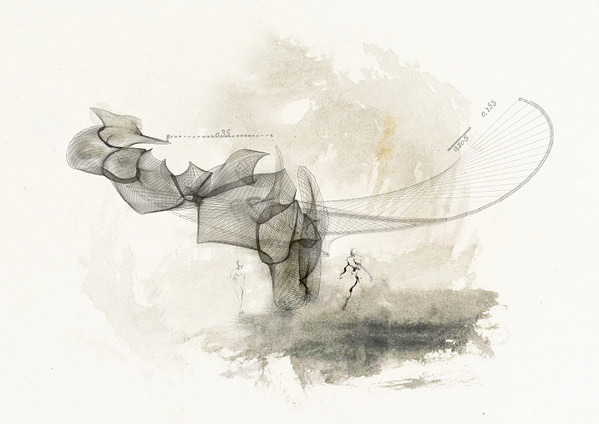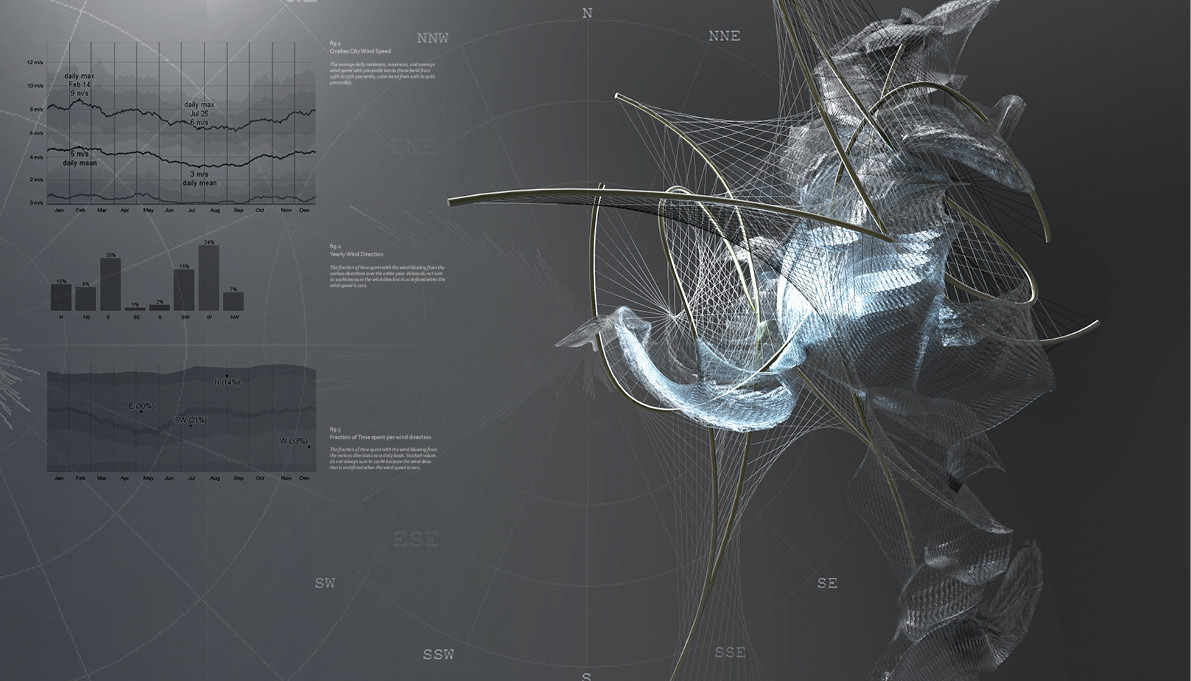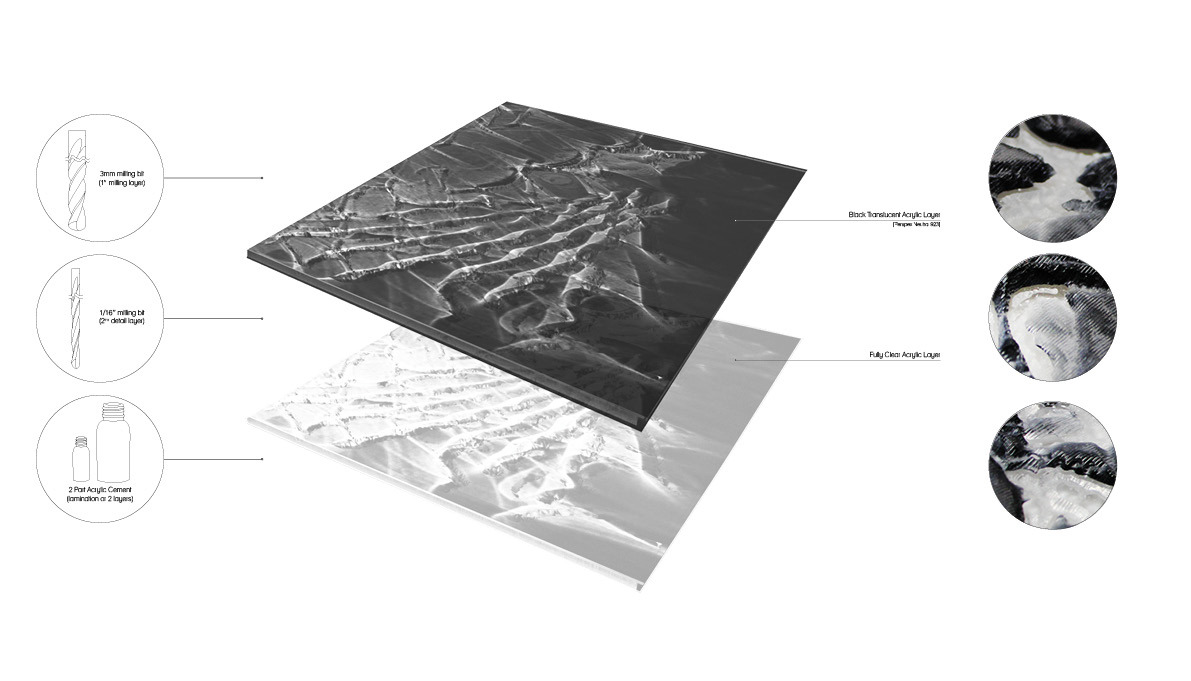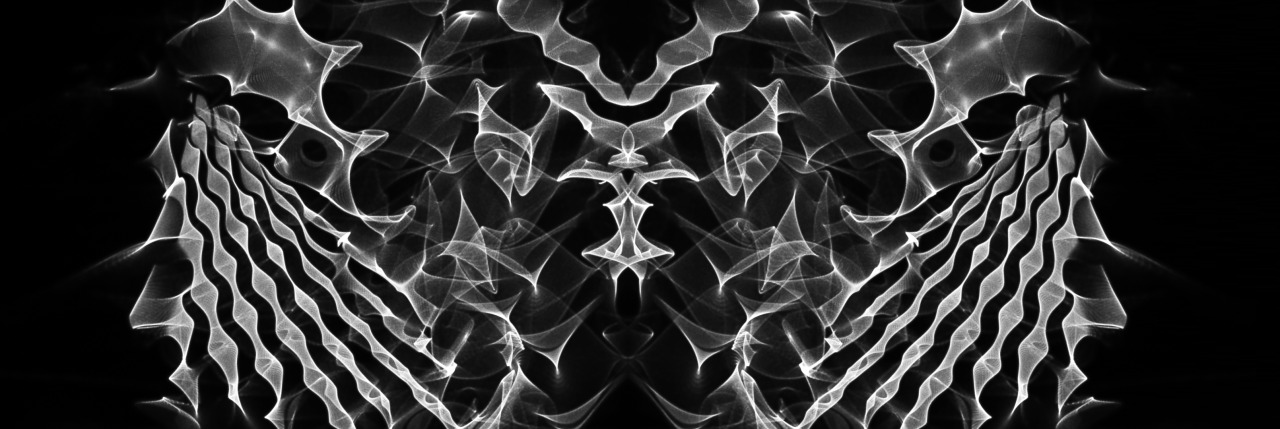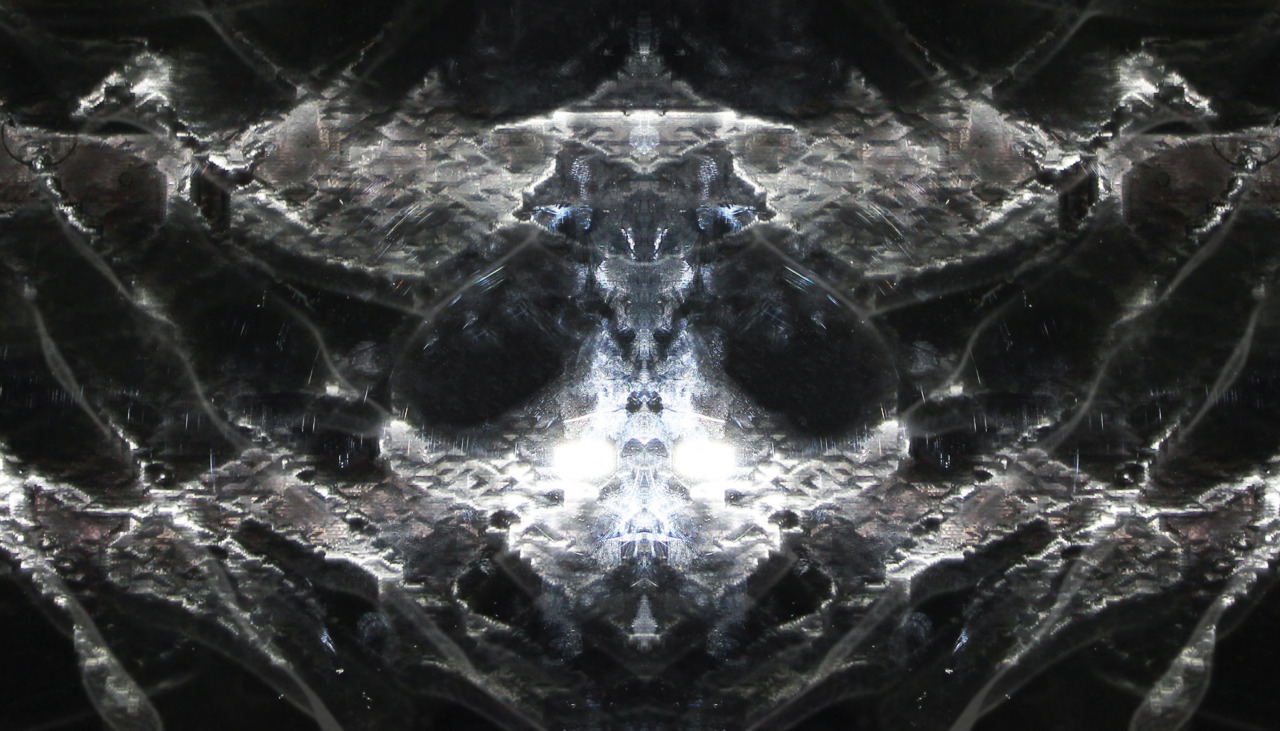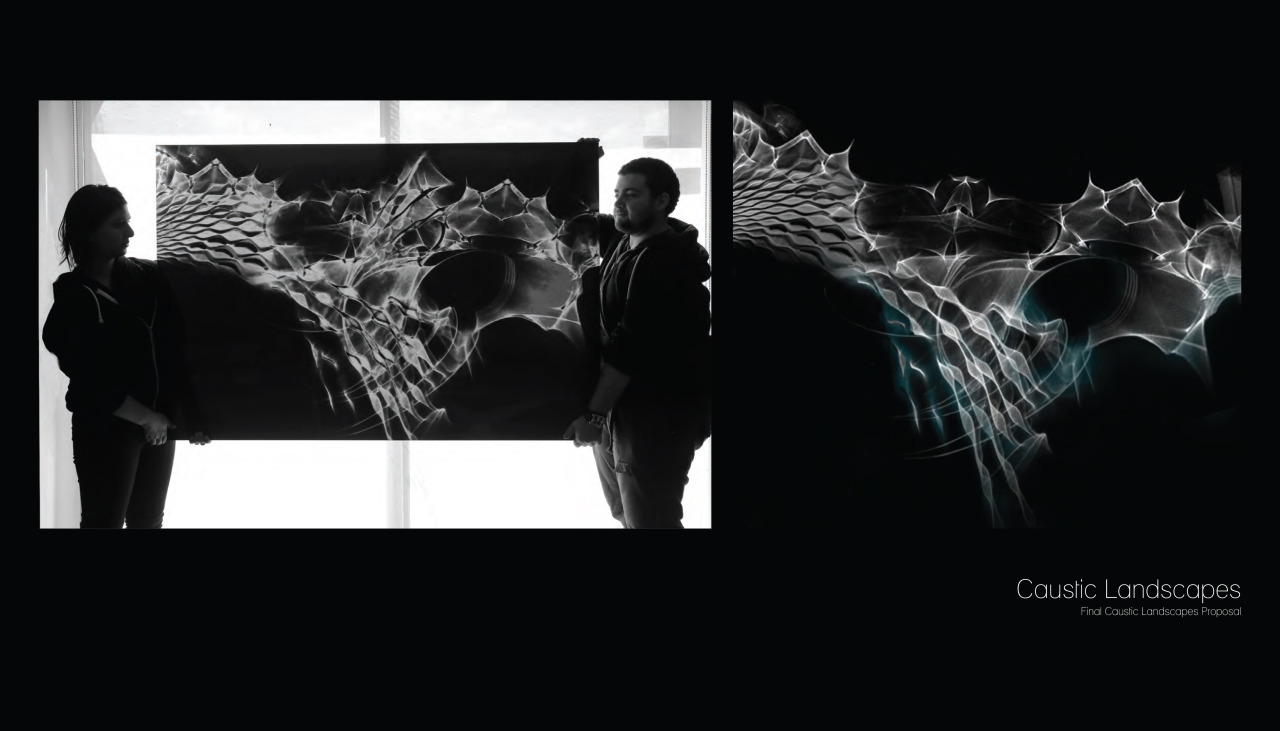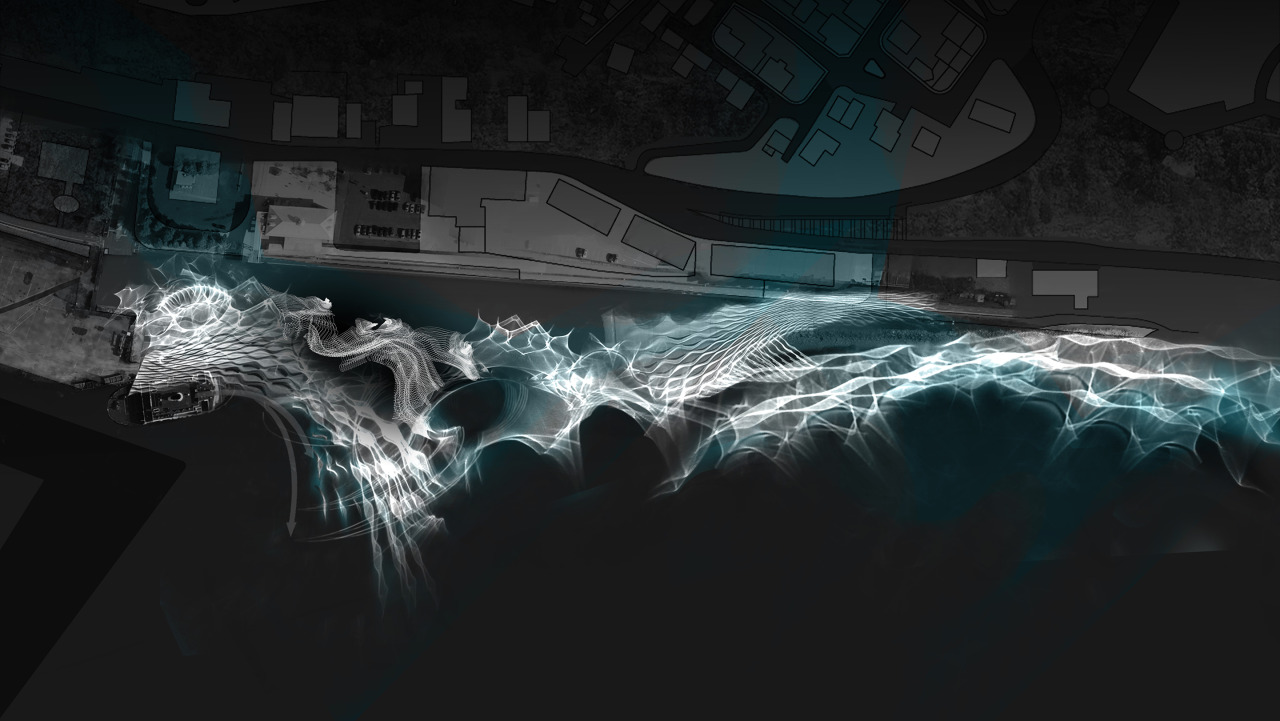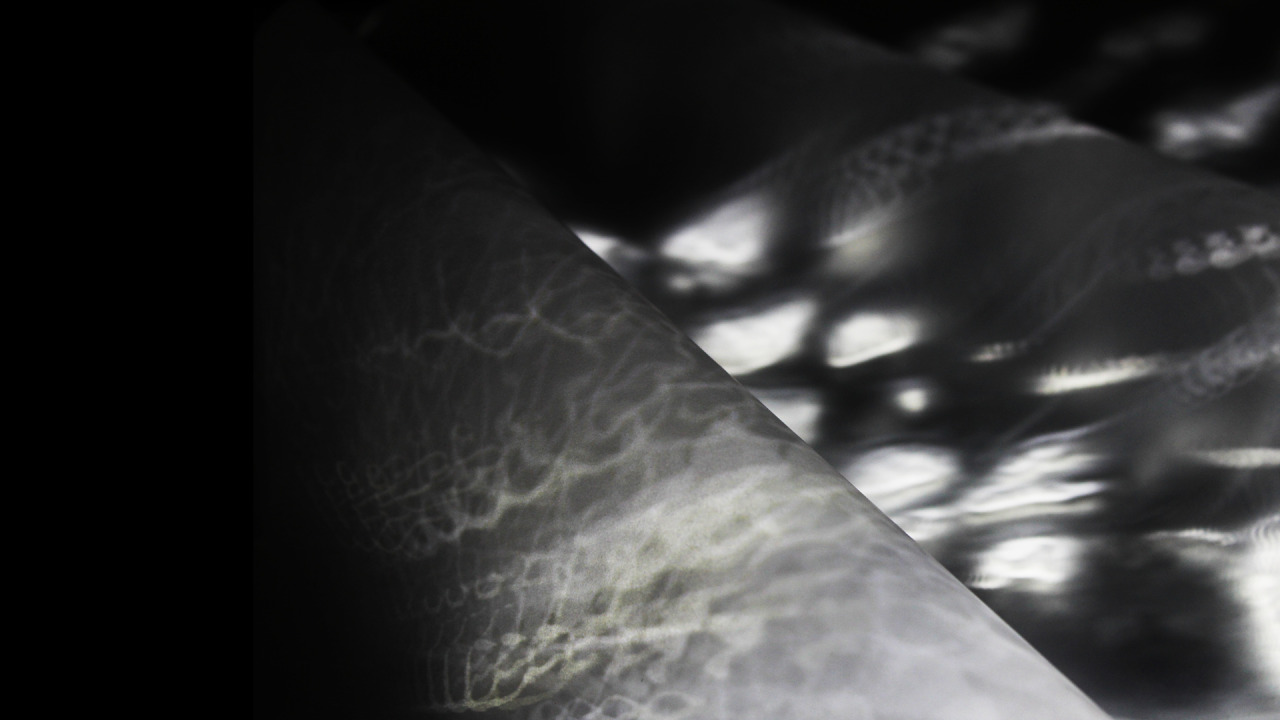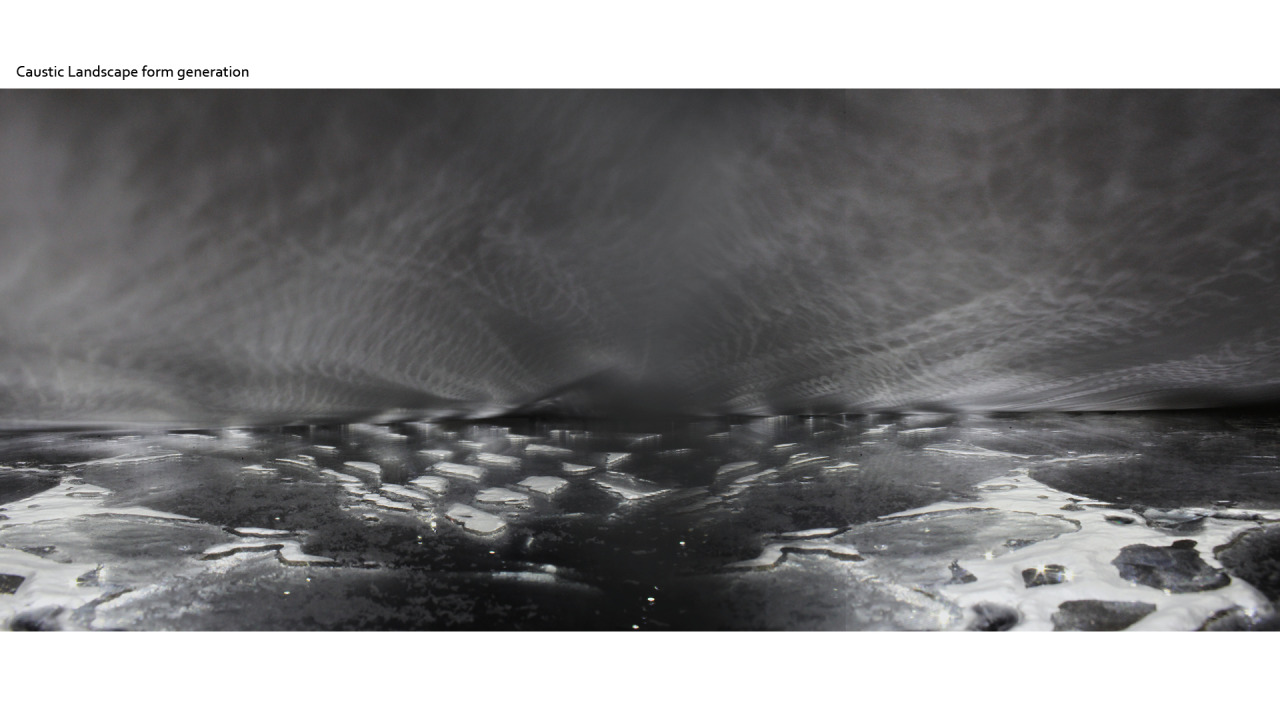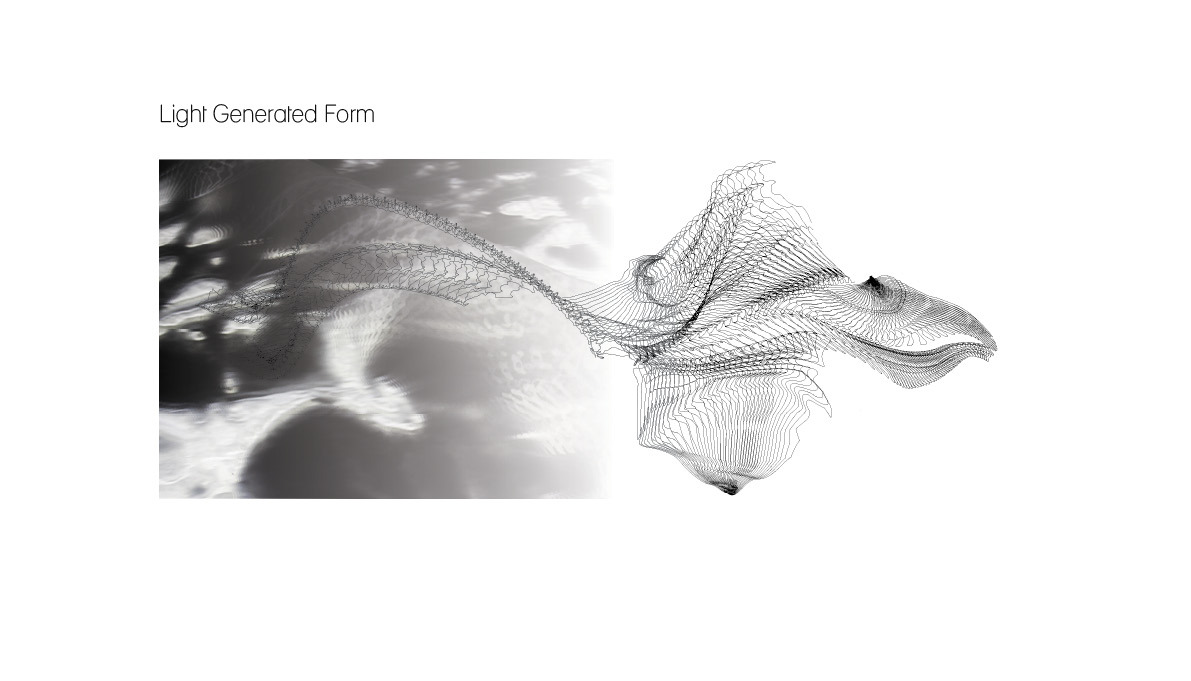Bartlett _ GAD _ RC2 [research cluster 2]
RC2 is an MArch course cluster that formulates powerful individual sets of values, defined by strong aesthetic (objects, materials) and intrinsic psychological (behaviours, fixations) factors.
Wednesday 30 October 2013
Friday 21 December 2012
Choreography of Light
Francois Mangion | Shuchi Agarwal | Ali Zolfaghary | Yan Ran
Our study of caustics was inspired by the work of photographer Alan Jaras (http://www.flickr.com/photos/
Our study of caustics was inspired by the work of photographer Alan Jaras (http://www.flickr.com/photos/
After studying the process of his photography we tried to emulate the same process ourselves by using daily objects. Continuing with the analysis we shifted to computer generated caustics using mental ray in Maya. To make the process more academic and to understand the phenomena of caustics we read JF Nye's book 'Natural Focusing and fine structure of light'. It becomes very challenging for us to exactly follow the mathematics used to control the process of generating both a caustic surface and mostly to simulate caustic curves on processing and/or mathematica.
On the other hand we are more interested into getting caustics networks (image1) and other caustic curves (other attached images) which then some how can be translated into architectural spaces. By doing so we would create a space totally designed using light caustics and the experience of the space would be further enhanced by caustics projected by the design of the space itself.
In order to understand how to control caustic patterns we are trying to understand other similar researches as to how one can design caustics to project an image. Doing so would give us enough knowledge into projecting a predefined caustic pattern which then we can apply architecturally. We do understand that the way we are using caustics is redundant to the basic nature of the phenomena but our intention is to be able to generate a shape from the light pattern which could act as a space.
We want to design an approach to building systems where skin/ structure/ shape are all integrated into one responsive building tissue completely designed and generated through caustics. This skin will be a hybrid through shape and surfaces. This method would give us an opportunity to get an architectural form completely generated and shaped by light. What if light becomes the new architect? What if light translates itself into space? What if light designs the 'perfect' architectural environment where darkness is not just the lack of light but a metaphysical proof of light bending, light evolution, light change, catastrophic behaviour?
We are also continuing with physical experimentation with reflectors we designed using glass and plastic and are also trying to do similar experiments on the computer.
Wednesday 21 November 2012
Friday 27 April 2012
Subscribe to:
Posts (Atom)

